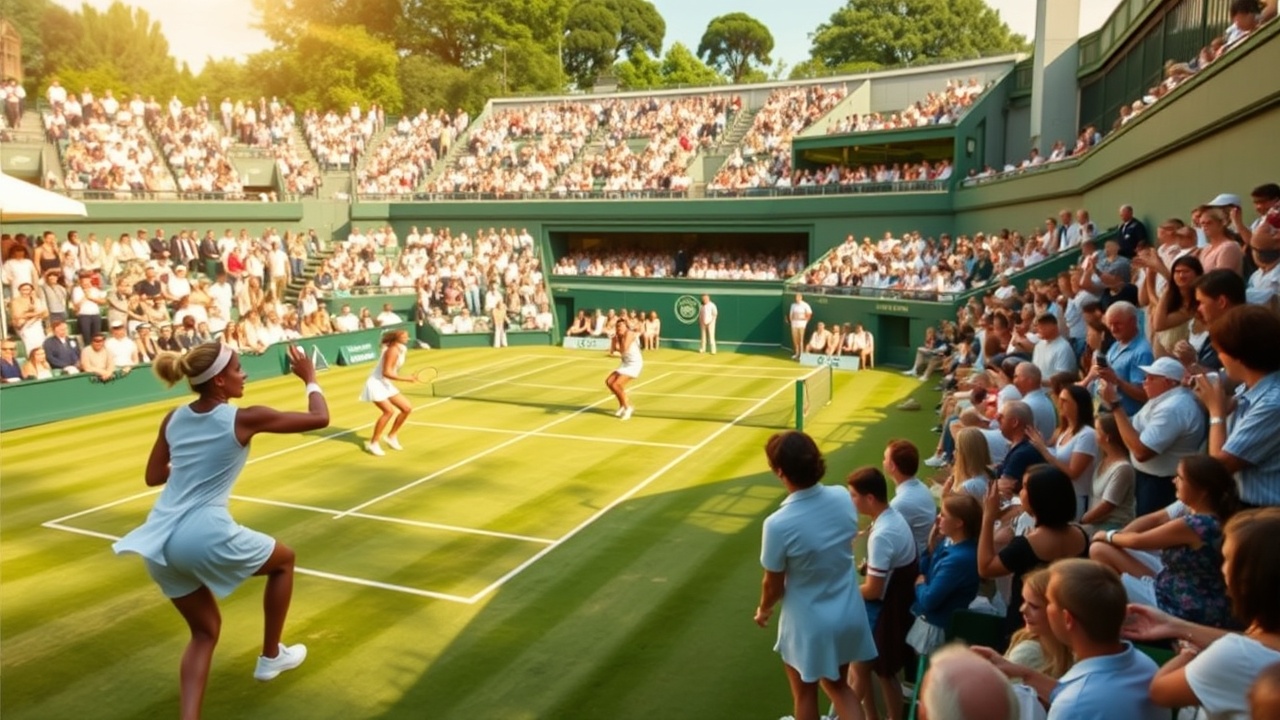Emma Raducanu Triumphs at Queen’s Club
The atmosphere at the Queen’s Club in West London was electric late Thursday afternoon as Emma Raducanu showcased her talent on the legendary Andy Murray Arena. Just moments before 6 p.m., she triumphed over Rebecca Šramková, advancing to the quarterfinals of the HSBC Championships. This match was particularly notable as it took place during what has long been regarded as the prime viewing slot for British tennis.
Significance of Women’s Events at Queen’s Club
The return of women’s events to Queen’s Club marks a significant milestone, as it was the first such competition held there in over five decades, dating back to 1973. This comeback aligns with the Lawn Tennis Association’s efforts to enhance the visibility and equality of women’s tennis, emphasizing the importance of women’s participation in major tournaments.
The Queen’s Club Championships originally featured both men’s and women’s competitions from 1890 until 1973, but a mix of scheduling conflicts and weather challenges led to the women’s event being scrapped, transitioning to Eastbourne, while the men shifted to Nottingham. Yet, by 1977, the men’s tournament reestablished its presence at Queen’s, becoming a pre-Wimbledon staple.
Challenging Stereotypes in British Tennis
A key motivation for introducing the women’s event back to Queen’s was to challenge ingrained stereotypes about the sport, particularly its association with affluence and exclusivity. The club, known for its luxury and traditional attire, mustered a strong response as some members previously expressed discontent about adding women’s matches to the lineup without their consent. However, tensions appeared to have eased after the club recently revised its booking fees and policies.
“Initially there was some animosity — you know how Queen’s can be, a bit elitist. But it seems the changes have been mostly accepted, as people can still access the courts during tournaments.”
The seating arrangements for this year’s event drew a more diverse audience than typical, creating a welcoming atmosphere. Heather Watson, a seasoned British competitor, remarked on the noticeable vibrancy of the audience, contrasting it with her recent experiences.
Inclusive Strategies for Success
Tournament director Laura Robson emphasized the focus on inclusivity, highlighting designed ticket pricing strategies that differentiate between men’s and women’s events, aiming to attract a younger demographic. With women’s tickets priced significantly lower than men’s for the final matches, this initiative has opened the field for broader community participation.
Despite the diversity efforts, the crowd remains predominantly affluent and predominantly white, creating space for brands like Crew Clothing to maintain their strong presence.
The tournament is anticipated to set records, potentially welcoming over 52,000 attendees, a notable achievement for a women’s-only event, even amidst the preference for the men’s matches. Despite any previous reservations from club members about the event’s logistics, it has been marketed as a relaxed venue with enhanced interaction between fans and players.
Competitive Spirit and Future Prospects
Although affected by last-minute withdrawals from top-ranked players, the tournament still features a competitive array of talent. Players like Madison Keys described Queen’s as among the best 500-level events they’ve ever experienced, acknowledging its unique charm compared to other venues. Robson and fellow executives aspire to elevate the event further, potentially classifying it as a higher-tier competition.
The women’s segment of the tournament boasts a prize pool of $1.4 million, spotlighting its financial importance within the circuit. However, stark differences in prize money compared to the men’s events continue to spark discussions, with full pay equality projected to arrive only by 2029.
A Turning Point for Women’s Tennis
This renewed focus on women’s tennis at Queen’s represents a turning point, offering British players like Raducanu an extraordinary opportunity to shine on a prominent stage that was historically closed to them. Fellow competitor Katie Boulter expressed her enthusiasm, affirming that playing at Queen’s has been a dream come true. British women’s tennis appears to be in a strong position, yet there’s work to be done before achieving the same visibility and ranking as their male counterparts.
Emma Raducanu’s recent win evoked cheers from the crowd and brought hope for the future of women’s tennis as she prepares to advance in her career. Yet her journey was cut short the next day, facing a tough loss that further underlined the competitive nature of the tournament. Overall, the Queen’s event signifies a crucial development in the landscape of British tennis, paving the way for greater representation and opportunities in the sport.




